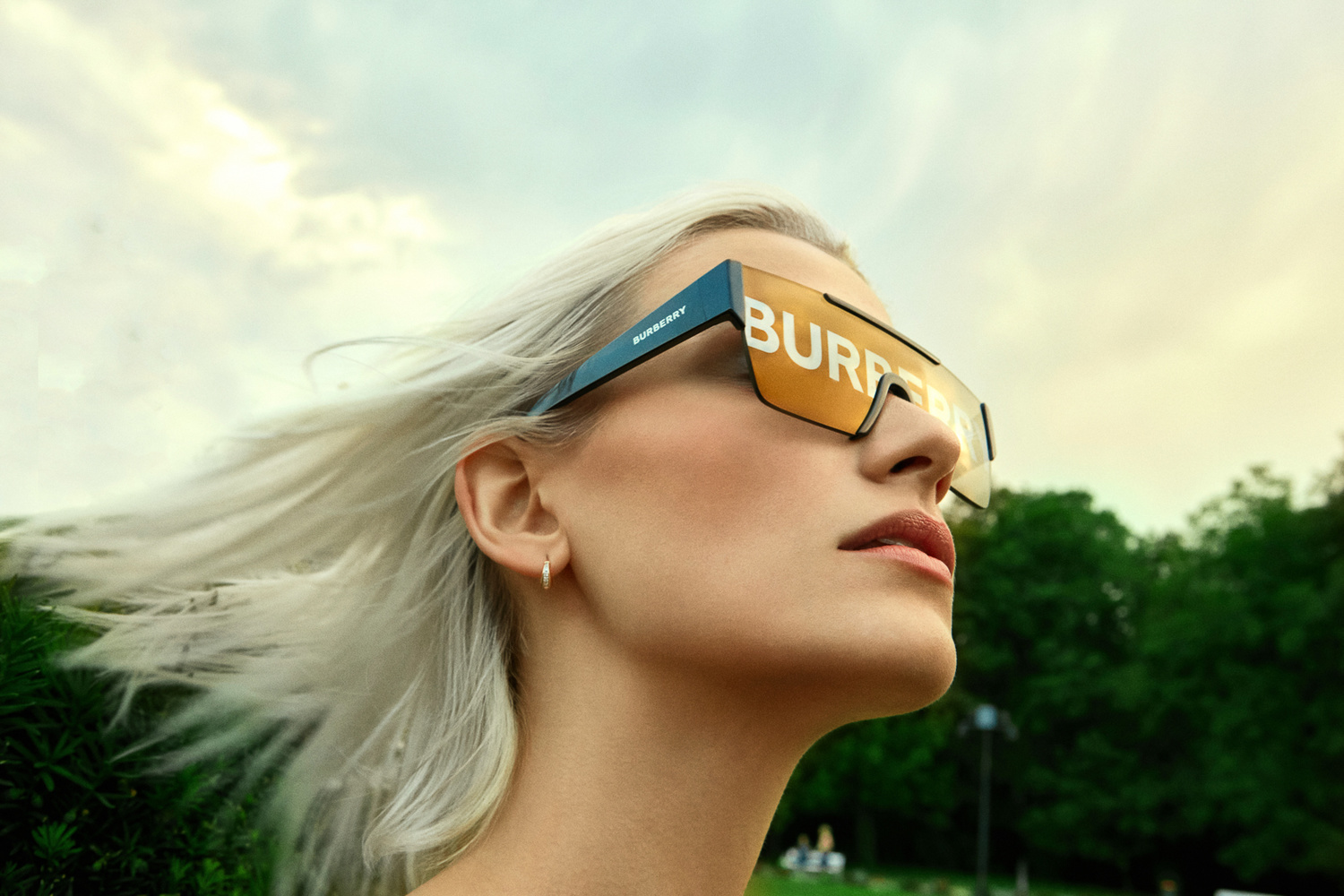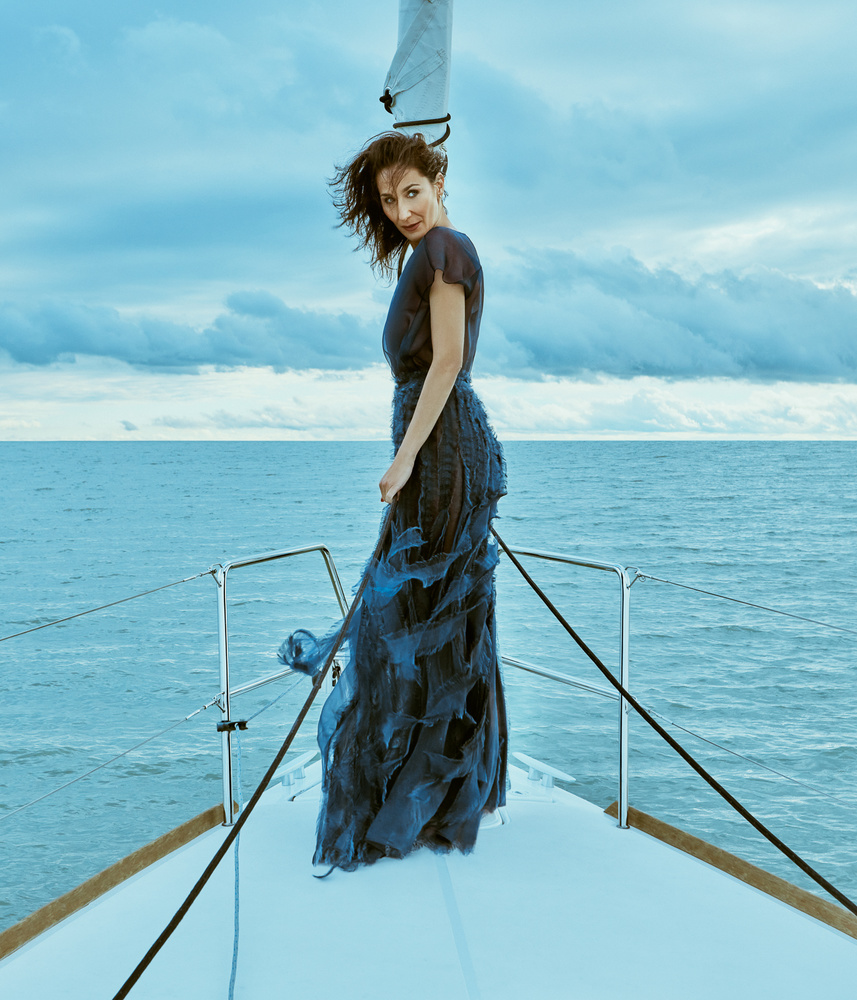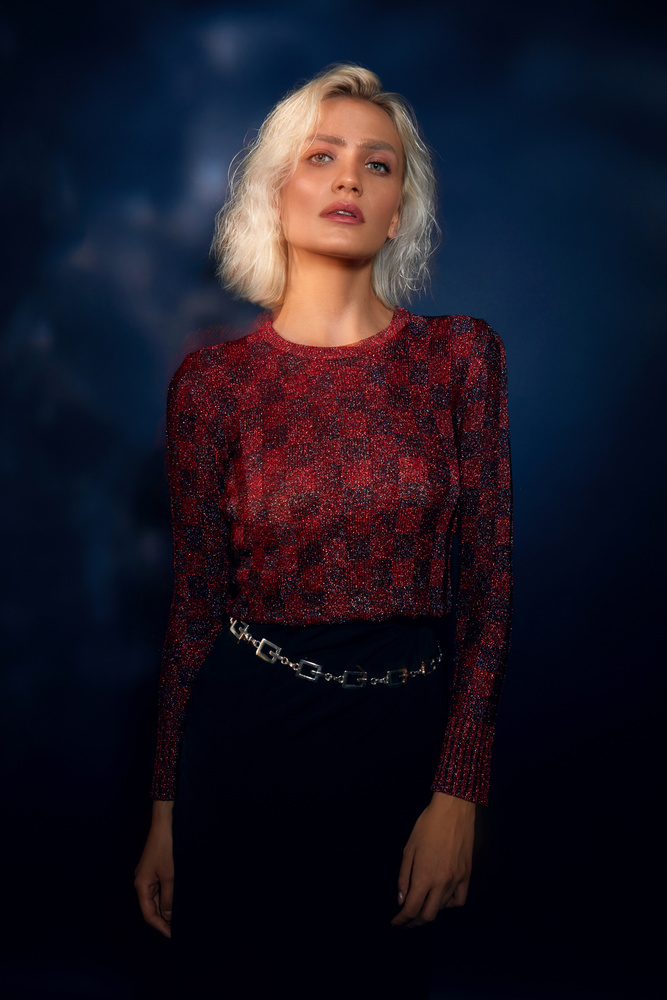In order to create great portraits, you need to have a lot of great components: lighting, composition, as well as camera and lens choice. Deciding what focal length to use for portraiture can be difficult, so in this article, I will make a few suggestions on lenses you should use for your next portrait photoshoot.
Before going any further, I need to stress that I own only 3 zoom lenses: Canon 16-35mm f/2.8 II, Canon 24-7mm f/2.8, and Canon 70-200mm f/2.8 IS. These allow me to capture images from 16-200mm. Frankly, the lens that lives on my camera is the 24-70, around 90% of my work is done with it. I shoot around 45-55mm mostly. The second most used lens is the 70-200, which is largely a beauty close-up lens for when I need a shallow depth of field. Most of my beauty work is also done with the 24-70. The 16-35 is the least used lens, and frankly, it is more of a BTS lens than anything else. Frankly, if I sell off the 16-35 and 70-200 I won’t lose too much. Nonetheless, without further ado, let’s see which focal lengths are used for which portraits.
24mm
This is the widest I’d go for a portrait in most cases. Sure, there is a place for wider angles, but the set would have to justify such usage. Even then 24mm is much too wide for a close-up. At this focal length, There is a lot of distortion, which makes the elements closest to the camera look huge, while elements further away appear disproportionally smaller. If you want to capture portraits with this lens, use it for full-body and commercial work. Try to stay away from using this lens for close-up work for now. It can be an interesting choice later on, but the pose and mood of the image should be appropriate. The depth of field is very large at 24mm, you will need an incredibly wide aperture (f/1.4) to get any kind of background blur.

35mm
A classic focal length for full and half-body portraiture. At this focal length, there is less distortion, and the depth of field is relatively shallow. It is unlikely that you will get anything exciting unless you use f/1.4, but there are certainly a lot of ways to use 35mm in portrait photography. To begin with, it is the ideal option for showing both the person and their environment. As 35mm is counted as a relatively wide lens, getting close and personal may not be a good idea as you will still see distortion.


50mm
The nifty fifty: A lens that I sold, only to later buy a 24-70mm and use it at 50mm. It may seem like the most boring focal length as it sits right between a wide 35mm and bokeh king 85mm. Honestly, if you’re just starting out you are unlikely to understand the hype around the “nifty fifty”. The reason for this is simply that for a “boring” focal length like 50mm, you need a really interesting subject. The purity with which a 50mm lens captures the scene is both a friend and an enemy. If you’re just starting out, stay away from the 50mm, instead pick an 85mm.


85mm
The iconic focal length is loved and recognized by the shallow depth of field it is able to produce. It is that “holy grail” of portrait lenses. You will not have any problems getting up close and personal with this lens. The only thing to keep in mind is that the closer you get the smaller your depth of field is, it gets hard to keep the eye on the subject in focus. This is why I personally advise to not shoot at f/1.2. Just because your lens can do f/1.2, doesn't mean you should shoot everything at that aperture. Stop down to f/4 or f/8 and capture an image where the subject’s nose, as well as eyes, are in focus.
If you’re using a DSLR, then you may face more difficulties with focusing an 85mm lens accurately, for there are no features such as eye and face tracking. If you like the look of f/1.2 on a portrait, you should consider looking at purchasing a mirrorless camera, or learning how to focus your lens accurately. Judging from my experience with Canon lenses, their EF 85mm is rather slow and inaccurate at times, while their RF 85mm is incredibly sharp, accurate, and overall way better than the EF counterpart. That said, I don’t own either of those lenses, and I personally won’t be buying them.

By Alex Cooke

By Alex Cooke
100mm
You may be wondering, what is a 100mm doing here? And for good reason, 100mm is known to the general public as a macro lens. It is an excellent macro lens, but also an excellent portrait lens. Crowning the 100nm as a macro lens is rather unfair, as it automatically suggests that it can’t do anything else. So much so, that we did an article on this! I suggest you read that article to get a good taste of what it really is to use a 100mm Macro lens for portraits.

By Alex Cooke

By Alex Cooke
135mm
This already sits in the telephoto range. What this means is that the lens will have a shallow depth of field, making focusing a challenge sometimes, but also that there will be excellent background blur – bokeh. Depending on the aperture you use, you will get various degrees of background blur. A thing to watch out for on such focal lengths is indeed depth of field. The closer to the subject you are, the shallower it is. The shallower it is, the harder will it be to nail focus. However, if you go quite far away from your subject, you can get interesting results shooting half-body portraits. Just be careful to not lose contact with the subject. I’ve noticed that shooting half and full-body images are best done at 35, not at 135mm. One time I had to get as much background blur as possible with my kit, so I shot a full-body with 200mm at f/2.8. It certainly looked weird, and my shouting didn’t help either.

By Alex Cooke

By Alex Cooke
Closing Thoughts
So, to answer the question asked in the title, choosing which lens to use for portrait photography really depends on the look you're going for. If you want to capture environmental work with less bokeh, you should go for a wider angle. At the same time, if you need more bokeh and a compressed background with less perspective distortion, go for a mid-range focal length such as 50mm. If all you need is ultimate bokeh and background blur, go for an 85mm, or a 135mm lens. There are several options, either primes or zooms. In short, if you need a more budget-friendly option, pick a zoom lens. It will be a sacrifice on how "fast" the lens can be, though. Let us know in the comments if you'd like to see an article discussing primes or zooms for portraits in more detail!







Don't over look the iconic ef lenses like the original 85mm 1.2L or its version ii, they are still stunning on mirrorless with eye detection and work much better without that mirror, also using Canon's DLO fixes those old lenses making them stunning. Saying the newer RF 85mm is sharper doesn't say much as noone wants to see pores in skin. I did some of my best work with the 85mm 1.2L for portraits; now on the R5 I only switched to the 85mm 1.4L because its much better for video work. Below the 85mm 1.2L and 135mm f2l on the R5.
Yes. My mental calculation is, first, what perspective I want and then, second, what framing I want.
I'll set my distance and angle to determine my perspective, then select my focal length to determine the framing.
Exactly. And that is why I use a single focal length and shoot a different distances and crop to get the desired compression. Of course that limits the final resolution of you image. But it is an excellent tool if you understand lens optics behavior and are getting started and can only afford one great lens. I would love for my camera to have custom crops that would give me a 50mm and 85mm filed of view from a native 35mm ff lens.
Good to know a lucky few have this. My camera is an R5. Would love for Canon to add this feature.
My portrait lens is a 35mm f/1.4 that I use in 1.6x crop mode, my only option on my camera.